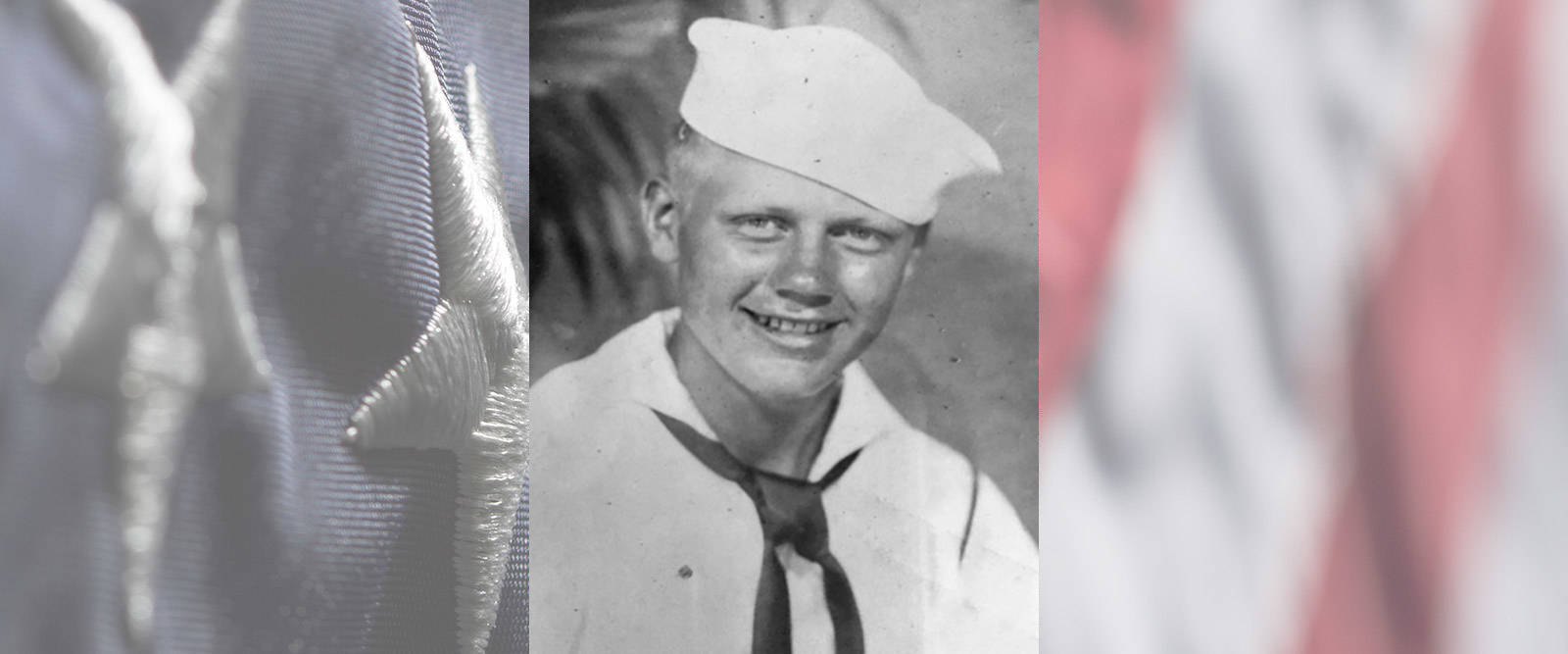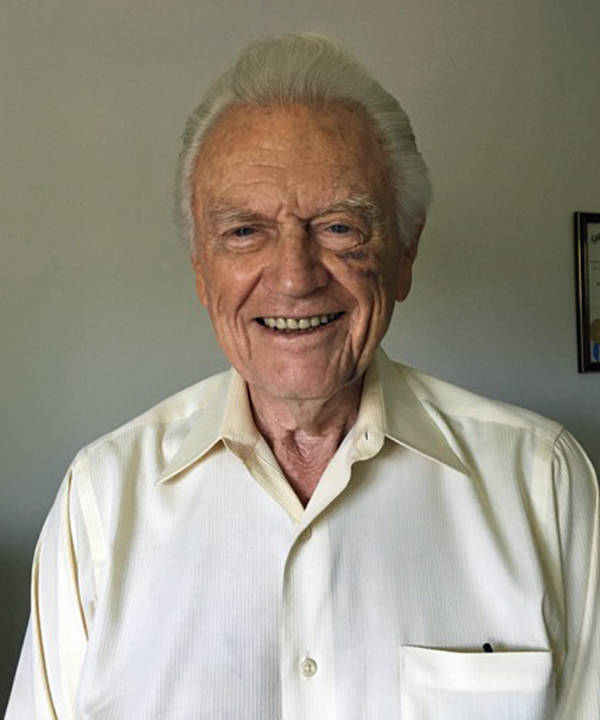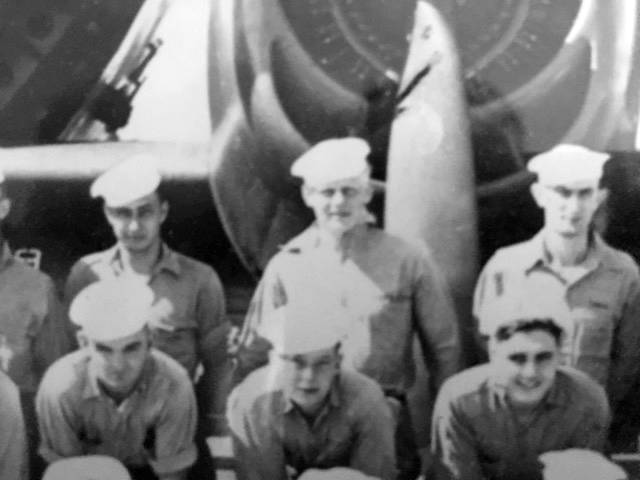U.S. Navy Korean War Libertyville, IL Flight date: 09/12/18
By Jim Parker, Honor Flight Chicago Veteran Interviews Volunteer
Bob Borgstrom, a U.S. Navy veteran who served in WWII was born on the north side of Chicago in early 1927. Bob’s dad, Lee, was an Army veteran of WWI and then worked for the CTA as a streetcar and bus driver. His mom, Irene, typical of the times, stayed at home to raise Bob and his younger brother, Dick, who also served in the Navy. As a youngster, Bob attended DeWitt Clinton Elementary School in the West Ridge neighborhood. In the 1930s, West Ridge was still rather rural but growing rapidly (Western and Devon Avenues had only recently been paved). Clinton was a newer school where his classmates were mostly of Swedish descent (like Bob) with some German and Irish students in the mix. Senn High School was his next stop where Bob joined the Junior ROTC program. At the time of his graduation, WWII was still in full swing and Bob, very near his 18th birthday, would become eligible for the draft. As a JROTC graduate, he was qualified for a brevet commission in the Illinois National Guard and was eligible for officer training. It was time for some words of wisdom from Bob’s dad. Lee’s memories of trench warfare were no doubt still vivid and they prompted him to suggest that being a 2nd Lt. in the Army might not be a wise choice. Bob agreed and enlisted in the Navy in January, 1945.
After Basic Training at Great Lakes and a few weeks convalescence to recover from a flu-like illness, Bob was assigned to the USS Cabot (CVL-28), an Independence-class light aircraft carrier. He joined the crew of the Cabot at Hunter’s Point Naval Shipyard in San Francisco and sailed into the war during the early summer of 1945. At that time, the island hopping campaign that had been the main focus of the Pacific Theater naval operations was just about over. Bob did not attend a Navy tech school so he learned his shipboard assignment through on-the-job training. His initial rank was Seaman Third Class. He became an “Airedale” (someone whose job put him on the carrier’s deck during flight operations). More specifically, Bob was trained to become a Fuel Technician whose primary duty was to fuel and refuel the ship’s aircraft prior to take off from the carrier deck. A carrier deck is a very busy place during flight operations. It takes a fairly large crew, working in unison to land a squadron of planes, then rearm, refuel and refit them quickly for another take-off. It can also be very dangerous.
In WWII, Navy deck crews did not yet have the color coded hats and jerseys identifying each crew men’s job. This meant a large number of men wearing similar uniforms were running around the deck, and in many cases not knowing who was going where to do what. Additionally, carriers are turned into the wind and and running at almost top speed during take offs. This resulted in a 30 to 40 knot wind blowing straight down the deck. A deck loaded with many airplanes, engines running, is also very, very loud, adding to the confusion. Bob was a quick learner, however, and before too long, he was able to “strike a rate” and became an Aviation Boatswain’s Mate Third Class.
In August of 1945, the war with Japan ended. Since Bob’s arrival, the Cabot’s primary assignment was preparation and training for what was anticipated to be the toughest mission of the war — an invasion of the Japanese home islands. Fortunately, the Atomic Bomb made that mission unnecessary. The Cabot’s job was changed to one in which it supported the landing of a large occupation force in the Yellow Sea area. One of Bob’s memories of the Yellow Sea assignment involved a mistaken identity. While on deck looking through the clear water, he saw several large round objects just below the surface. To him they looked like they could be mines. He thought the Cabot was sailing right through the area with the “mines” bouncing off the hull. He expected a huge explosion any second. Bob was very relieved to find out that the “mines” were just some very large jellyfish. After that assignment, the Cabot returned to the Okinawa area where very large numbers of men, ships and material intended for the invasion were located.
The end of the war did not mean, however, the end of danger. In early October, 1945 a tropical storm developed near the Caroline Islands. The weather station at Guam put out an advisory and named it “Louise.” The storm appeared to be of moderate size and was taking a fairly predictable path that would take it about 150 miles east of Okinawa. This trajectory continued for a few days until this storm suddenly changed direction and intensity. On the morning of October 9, twelve hours ahead of the previous day’s prediction, the storm had turned into a typhoon and hit the island head-on. By late afternoon the winds had reached over 100 knots with torrential rains, zero visibility and 30-35 foot seas. The storm lasted about 21 hours and resulted in more than 80 men dead or missing and about 42 ships sunk or damaged beyond repair; about 200 other ships had been run aground.
Typhoon Louise remains as one of the most powerful typhoons to ever hit that part of Japan. Bob does not remember where the Cabot was deployed during the storm. The sudden changes in direction and speed made it difficult or impossible for many ships to find a course away from the most dangerous area. He clearly does remember the heavy seas and the pitching and rolling of his ship. He said that he has never experienced anything as frightening as that storm. A few weeks later, the Cabot picked up a load of returning soldiers and headed back to San Francisco. From there the Cabot went east to Philadelphia. During that time, Bob went to Chicago for some leave time, then met the ship in Philadelphia. He remained on the East Coast until he was honorably discharged from the Navy in June,1946.
Bob returned to Chicago and was hired by the Upjohn Company as a pharmaceutical salesman. He and his wife, Jackie, eventually settled down in north suburban Mettawa and raised their five children. His career at Upjohn went well and Bob was promoted to Regional Sales Manager in its Veterinary Medicines Division. He retired from Upjohn in 1985. Sadly, Jackie passed away and Bob was suddenly alone. Fortunately he was able to meet and marry his second wife, Margie. After a few years in Lake Forest, they moved to Florida where they lived for quite a long time until Margie passed away not too long ago. Bob moved back to Illinois and settled down in Libertyville where he currently resides near most of his children. He finds his days are staying full and he keeps busy – ten grandchildren and 22 great-grandchildren will do that.
Honor Flight Chicago is honored and proud to welcome Bob Borgstrom, one of our very own hometown heroes aboard our September 12, 2018 flight.





